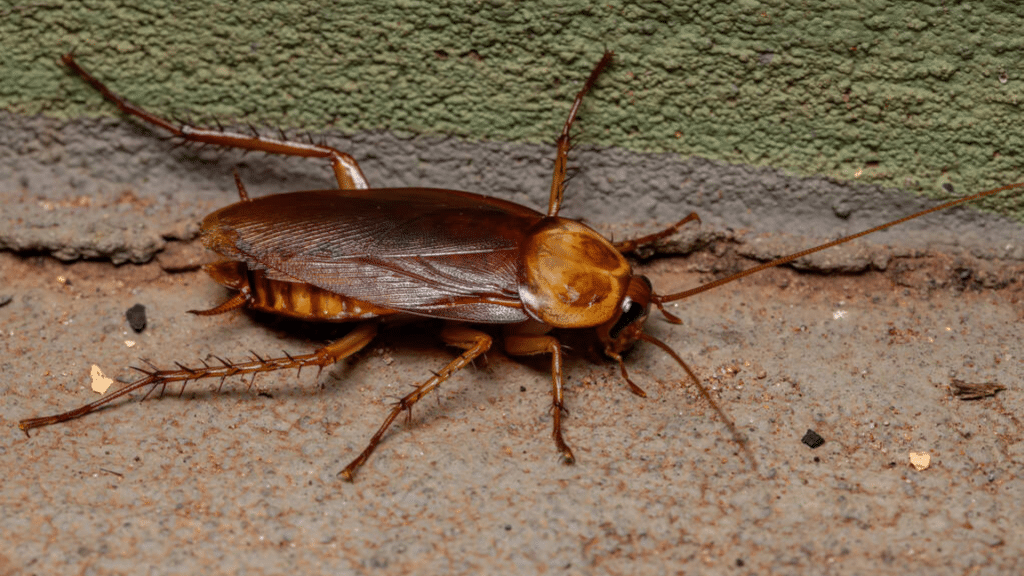Ever wondered why palmetto bugs are often mistaken for cockroaches?
Well, the answer lies in their surprising behavior, adaptations, and how they interact with their surroundings.
Many people confuse these creepy insects with regular cockroaches, and their sudden movements can be shocking.
But there’s more to them than just their size and speed.
In this blog, you will learn about palmetto bugs, whether they can fly, how to keep them out of your home, and much more.
Let’s get started!
What are Palmetto Bugs?
Palmetto bugs are a type of large cockroach known as Periplaneta americana, or the American cockroach.
Despite their name, they are not a different insect. People often call them palmetto bugs because they are commonly found around palmetto trees, especially in the southern United States.
These bugs can grow up to 2 inches long, have a reddish-brown body, and have a yellowish mark behind their heads.
Can Palmetto Bugs Fly or Do They Prefer to Run?
Yes, palmetto bugs can fly, but not very well. Only adult palmetto bugs have fully developed wings, while nymphs (young roaches) cannot fly at all.
Adults can use their wings to glide short distances, but their flight is clumsy and quick, not smooth or long like that of a butterfly or fly.
They usually take flight when scared or trying to escape. Sometimes, they glide from high spots or fly toward lights, which can catch people off guard.
Even though they can fly, palmetto bugs mostly choose to run. Their strong legs let them move quickly across floors and other surfaces.
Since they are active at night and like to stay hidden, running helps them stay out of sight. Flying takes more energy and isn’t as steady, so they only use it when absolutely needed.
Where Do Palmetto Bugs Live?
Palmetto bugs like warm, wet places. They are often found in the southeastern U.S., especially in states like Florida and South Carolina.
In homes, they live in basements, crawl spaces, kitchens, and bathrooms. Outside, they hide under leaves, mulch, and near trees. They come inside looking for food, water, and shelter.
These bugs can survive in many places, but they love areas with high humidity and plenty of hiding spots.
Comparison Between Palmetto Bugs vs. Other Cockroaches
Not all roaches are the same. Here’s how to tell palmetto bugs apart:
| Feature | Palmetto Bugs (American Cockroaches) | German Cockroaches | Oriental Cockroaches |
|---|---|---|---|
| Size | 1.5–2 inches | 0.5–0.6 inches | 1–1.25 inches |
| Color | Reddish-brown with yellow markings | Light brown/tan | Dark brown/black |
| Wings | Fully developed (can fly) | Present (rarely fly) | Short wings (can’t fly) |
| Speed | Extremely fast runners | Fast crawlers | Slower movers |
Tip: If you spot a large, fast-moving bug that sometimes glides, it’s probably a palmetto bug.
Tips to Keep Palmetto Bugs Out of Your Home
You can do several things to stop palmetto bugs from getting inside:
- Seal Cracks and Gaps: Check doors, windows, and walls for openings.
- Keep Things Dry: Fix leaks and use fans or dehumidifiers in damp areas.
- Store Food Properly: Keep food in sealed containers and clean up crumbs.
- Take Out Trash Often: Don’t let garbage sit out, especially in warm weather.
- Use Natural Repellents: Sprinkle boric acid or place sticky traps in common hiding spots.
If these steps don’t help, call a pest control expert. They can find out where the bugs are hiding and treat your home safely.
Some Interesting Facts About Palmetto Bugs
- They are most active at night and usually hide during the day.
- A female can lay dozens of eggs in her lifetime.
- Their eggs are stored in a small case called an ootheca.
- They can survive without food for a month, but only for a week without water.
- They carry bacteria (e.g., Salmonella) and can trigger asthma/allergies.
Wrapping It Up
Finally, the confusion between palmetto bugs and cockroaches often comes down to looks, names, and the surprise factor when they show up.
However, this blog helped clear up that mix-up, explained what makes them stand out, and offered helpful tips to deal with them confidently.
Now you know what you’re seeing—and how to handle it.















